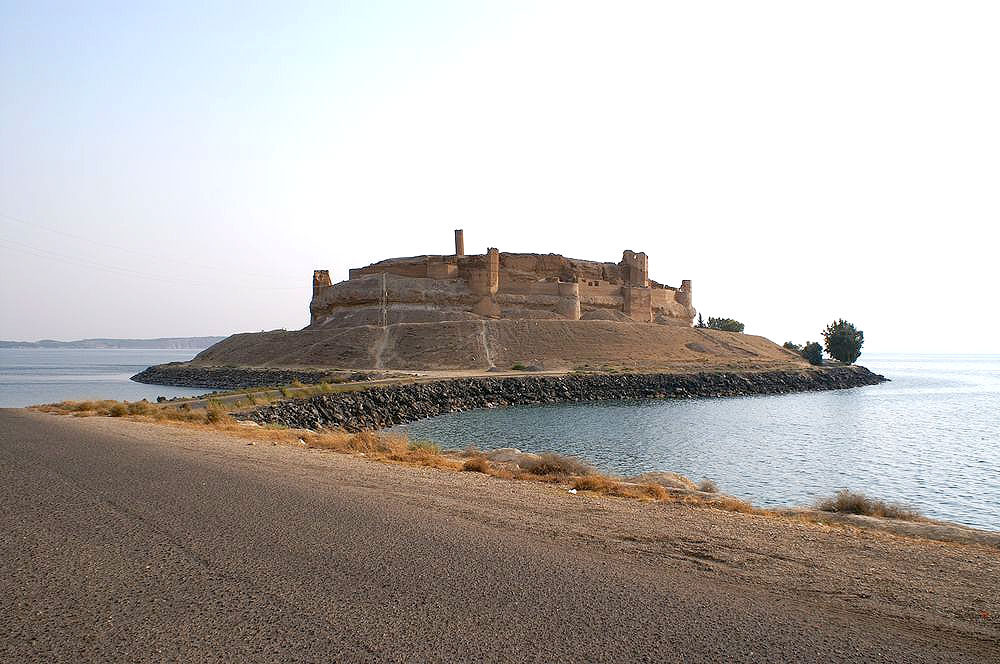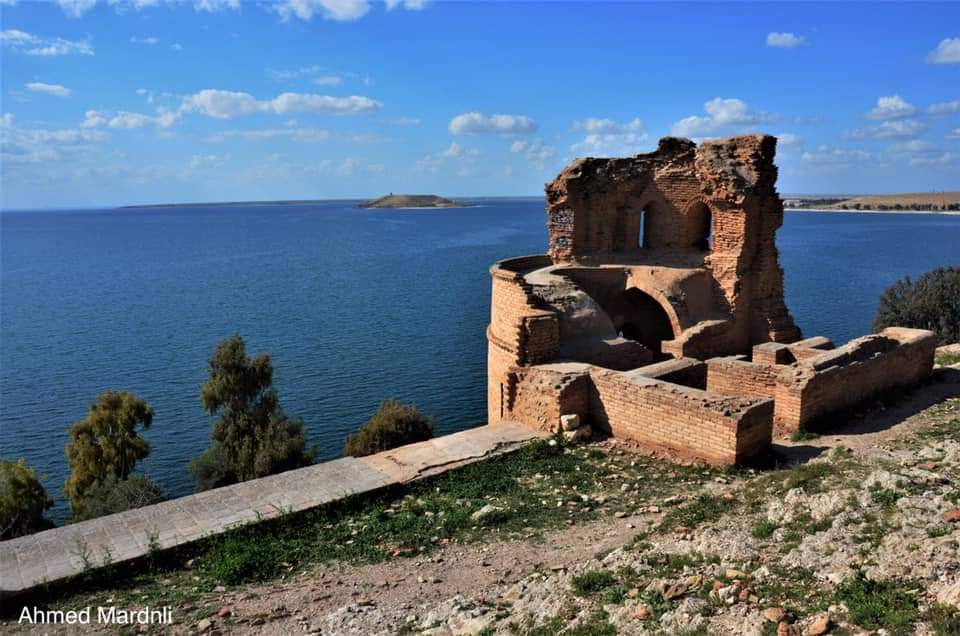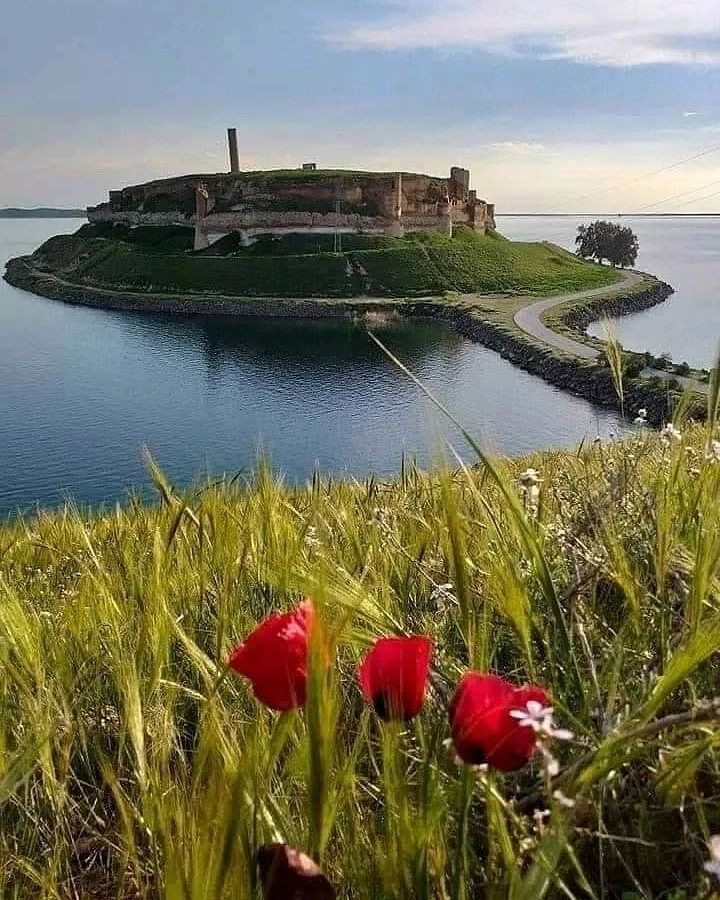Qal’at Ja’bar: A Historic Fortress in Syria
Visitor Information
Google Rating: 4.5
Popularity: Low
Google Maps: View on Google Maps
Country: Syria
Civilization: Early Islamic, Medieval Islamic, Ottoman
Remains: Military
History
Qal’at Ja’bar is a fortress situated in the municipality of Al Tabqah in modern-day Syria. The castle was built by Muslim rulers and positioned on a hill overlooking the Euphrates Valley, serving as a key military and strategic site in the region.
The site, originally known as Dawsar before the Islamic period, appears to have been fortified early, possibly as far back as the 7th century. It occupied an important location along a route connecting the city of Raqqa with areas to the west. The castle enters recorded history in 1040/41 when it is mentioned during the campaign of the Fatimid governor Anushtakin al-Dizbari. Subsequently, control passed to Ja’bar ibn Sabiq, a leader linked to either the Banu Numayr or Banu Qushayr tribe; he was killed at the fortress in 1071/72.
In 1086, the Seljuk Sultan Malik-Shah I captured the castle and awarded it to Salim ibn Malik ibn Badran, a commander associated with the Uqaylid dynasty. It is likely during this period or under the Numayr tribe that the castle’s main fortifications were constructed. The Uqaylids maintained control over Qal’at Ja’bar for much of the next century, interrupted briefly in 1102 when Crusader forces seized it.
In 1146, the fortress became the scene of a dramatic event when Zengi, a powerful Muslim ruler and founder of the Zengid dynasty, laid siege to it but was assassinated within its walls by a slave. His son, Nur ad-Din, gained possession of the castle in 1168 and carried out substantial rebuilding efforts. The modifications made during his rule form the majority of the castle’s extant structures today.
Following this, the castle experienced damage during the Mongol invasions that swept through the region. It endured significant restoration in the 14th century, reviving its defensive and residential functions.
Qal’at Ja’bar is also connected with the legendary tomb of Suleyman Shah, traditionally regarded as the grandfather of Osman I, founder of the Ottoman Empire. However, there is uncertainty about this identification, and the tomb may instead commemorate Suleyman bin Kutalmish, a Seljuk prince. Known as Mezār-i Türk or the “Tomb of the Turks,” the structure was rebuilt by Ottoman Sultan Abdul Hamid II in the late 19th or early 20th century.
Under the 1921 Treaty of Ankara, the area around the tomb was designated as Turkish territory, guarded by Turkish soldiers. This made the castle a Turkish exclave within Syria until 1973, when rising waters from the damming of the Euphrates to create Lake Assad required relocating the tomb and the exclave northward. Control of the castle itself reverted to Syria at this time.
In recent history, during the Syrian Civil War, the Islamic State (ISIL) took control of Qal’at Ja’bar in 2014. They reportedly used the fortress for weapons storage and as a training site. On January 6, 2017, the Syrian Democratic Forces recaptured the castle after clashes that resulted in the deaths of 22 ISIL fighters.
Archaeological excavations and conservation work began at the site in 1965, partly in response to the flooding caused by the Tabqa Dam project. These efforts continued through the 1970s, helping to preserve and document the castle’s historical fabric.
Remains
Qal’at Ja’bar occupies a roughly rectangular area measuring about 370 by 170 meters. The castle is founded on a rocky outcrop and is enclosed by a sturdy stone wall fortified by 35 bastions. A dry moat partially surrounds the fortress, adding to its defensive design. Its general plan closely mirrors that of the citadel of Aleppo, another major medieval fortress in Syria. The upper sections of the castle walls and structures are notable for their construction using baked bricks, a material common in the region and period.
The main entrance to the inner part of the fortress includes a gatehouse, approached by a ramp carved directly into the rock. This winding ramp would have served to slow attackers and enhance the stronghold’s security. Within the castle, archaeological remains include a vaulted hall, indicating a significant ceremonial or residential space, and a cylindrical brick minaret. This minaret, likely erected around 1173 by Nur ad-Din during his reconstruction phase, rises as the highest point within the fortress.
Most of the visible brickwork in the castle today results from careful restoration directed by the Syrian Directorate-General of Antiquities and Museums. From 1965 to 1974, restoration concentrated on the eastern defensive walls and towers, parts of the western ramparts, and the donjon known as Alia. The donjon was adapted to function as a museum space to house artifacts recovered from the site. To support these restoration activities, a small brickworks was established within the castle grounds, enabling authentic brick production for conservation.
Following the creation of Lake Assad, the castle was protected against flooding by the construction of a glacis—an artificial sloping embankment—and connected to the shore by an artificial causeway. This engineering ensured the fortress remained accessible despite its new island-like setting.
Findings from excavations at Qal’at Ja’bar are exhibited in nearby museums, including the National Museum of Aleppo and the Raqqa Museum, providing valuable insight into the site’s historical and architectural importance.




